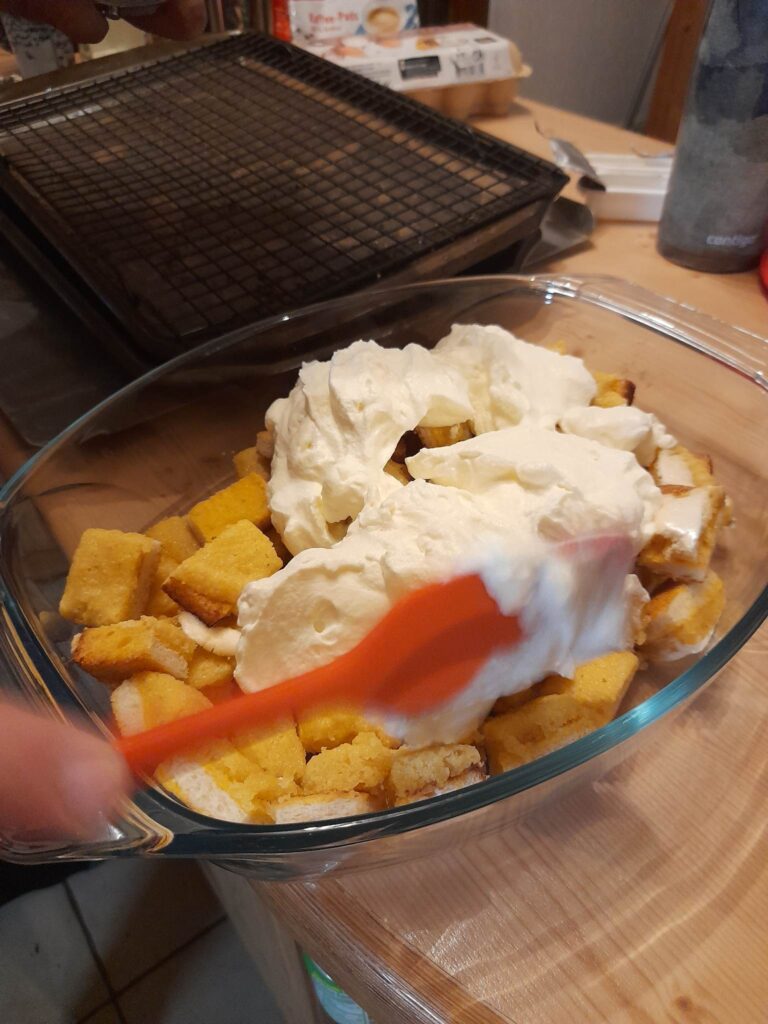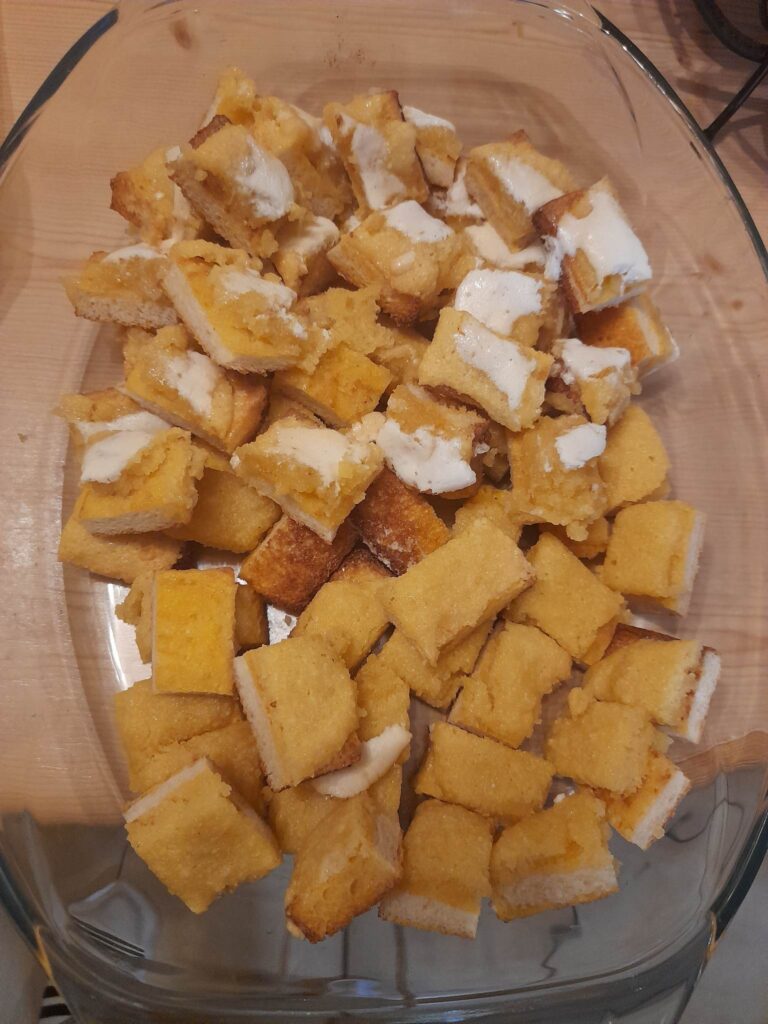This was the second experiment I subjected my friends to after our visit to the museum in Mannheim. It was a proof-of-concept test of the ‘Snow‘ recipe I posted a week ago:

52 To make Snow
Take a semmel loaf, cut it apart, and you may also coat it in egg. Roast it over the coals. Take the egg batter (airtaig – probably the almond mixture) as for marcepan, spread it on the roasted semmel and slice it, not quite one finger thick. Lay the slices on a bowl so that the almond is toasted. Then take thick milk, as thick as possible, add a handful of sugar and beat it in a pot, thus it develops a foam. Place the foam on the slices with the almond that are toasted so that the almond batter rises. Make a high foam, thus it melts below and the bread softens. Thus you have good snow.
The recipe is not entirely clear and I was mainly aiming to work out the flavour profile here, but it was very interesting and definitely something I want to repeat. My initial reading was that this would involve bread soakled in egg and toasted, then spread with airtaig – the kind of egg-bound almond paste that marzipan cookies were covered in. A commenter on Facebook reminded me that this word could also refer to the meringue topping that actual baked marzipans were covered with in the sixteenth century. I am not fully convinced – it does not really mesh with the way the word mandel is used as an uncountable here – but it sounds reasonable enough to consider. So I did both.

Starting out with plain white bread (and again, it would be ideal to have something like artisanal Brötchen with a denser crumb than we typically get induistrially), I soaked them in beaten egg and toasted them in the oven until they were dry, but barely browned. Then I preparted an almond paste with ground blanched almonds, egg, and sugar that I spread on the bread and again toasted lightly. Then I spread half the slices with a mix of beaten egg white, sugar, and rosewater. It happened under time pressure and ended up not looking pretty, but this was not a beauty pageant. One all of it was toasted enough to be crusty, I sliced up the bread into bite-sized pieces for ease of serving and let it all cool down. I am convinced the original dish would have involved larger pieces arranged decoratively.

Shortly before dessert time, I whipped cream with sugar and spread it over the bread pieces in the serving dish. One half was filled with the bread pieces with only almond paste, the other with those topped with egg whites. The latter were nicer to look at, and the combination of two things beaten to a froth alone might have made this a favourite at a time it was all a novelty. I had intended to try the dish immediately, then let part of it stand for an hour or two to see how the cream slowly reverting to liquid would affect the consistency. This was not to be – the taste test was unequivocal and it was all gone.
Doing this again, I intend to use Brötchen with the crust on and slice them horizontally before the first toasting and crosswise afterwards to produce fingerfood-sized wedges. The taste result convinces me of the almond paste, but I think it would even work with only the meringue topping. And served as a spoonable mess, it is suitable for modern parties. I am still convinced it would be better with fruit, but of course cream was mainly a springtime specialty and fresh fruit seasonal in late summer, when whipping cream would be a challenge. Medieval Eton Mess it is not, then.
